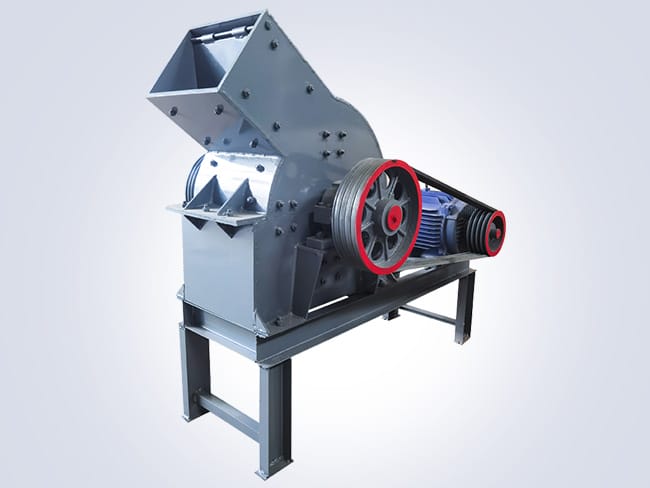
In the material crushing processes of numerous industries such as mining, building materials, and chemicals, hammer crushers play a a crucial role. Hammer Crusher: A Competent Assistant in Mining Crushing A hammer crusher is mainly composed of components such as a rotor, hammer heads, and liners. Its working principle is simple yet efficient. An electric motor drives the rotor to rotate at high speed. After materials enter the crushing chamber, they are crushed by the impact of the high-speed rotating hammer heads. The crushed materials gain kinetic energy and rush towards the liners at high speed for further crushing. Meanwhile, the materials also collide with each other, achieving multiple crushing stages. Eventually, they reach the required particle size and are discharged from the outlet. It boasts numerous significant advantages. With a large crushing ratio, it can crush large pieces of material into smaller particles in one go. Simplifying the crushing process and enhancing production efficiency. Its relatively simple structure makes maintenance convenient. When wear-prone parts like hammer heads are worn out, they can be quickly replaced, reducing downtime. Moreover, it has a wide range of applications, effectively crushing not only brittle materials such as limestone and coal but also medium-hard […]
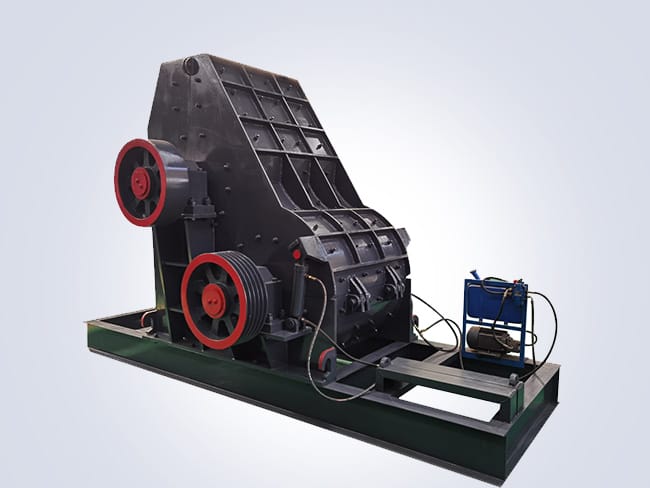
The sand making machine is a key piece of equipment in modern sand and gravel aggregate production, widely applied in fields such as construction, transportation, and water conservancy. Its core function is to crush and shape natural stones or construction waste, transforming them into manufactured sand that meets engineering standards. This effectively alleviates the shortage of natural sand resources and promotes the development of green building materials. Sand Making Machine: The Core Equipment for Sand and Gravel Aggregate Production The working principles of sand making machines generally fall into two modes: “stone-on-stone” and “stone-on-iron”. In the “stone-on-stone” mode, materials are broken through high-speed collisions among themselves, resulting in rounded finished particles. In the “stone-on-iron” mode, a hammerhead is used for impact, offering higher efficiency. Modern sand making machines incorporate intelligent control technology. Enabling real-time parameter adjustments to ensure uniform particle size of the discharged material. Additionally, they are equipped with dust removal devices, significantly reducing dust pollution and meeting environmental protection requirements. The advantages of sand making machines are remarkable. Firstly, they are highly efficient, with a single machine capable of producing hundreds of tons per hour, meeting the demands of large-scale production. Secondly, they exhibit strong adaptability, capable of […]
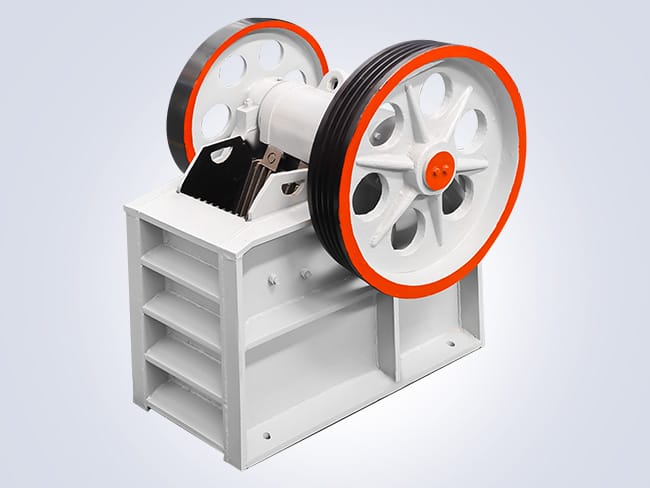
As a key piece of equipment in the mining, construction materials, chemical engineering, and other fields, the jaw crusher serves as a “vanguard” in material processing due to its efficient and stable crushing capabilities. Its core function lies in breaking large pieces of ore, rock, or construction waste into particle sizes that meet the requirements of subsequent processes through mechanical actions such as squeezing and splitting, thereby providing basic materials for various processes including ore dressing, sand making, and concrete production. Jaw Crusher: The Core Force in Material Crushing In mining operations, the jaw crusher is the preferred choice for primary crushing. It can handle various hard materials with a compressive strength of no more than 320 MPa, such as granite, limestone, and iron ore, breaking the raw ore into sizes suitable for transportation and secondary processing, thereby significantly enhancing resource utilization. In the field of construction waste recycling, its powerful crushing capability can transform concrete blocks, bricks, tiles, and other waste materials into recycled aggregates, promoting the development of a circular economy. Moreover, this equipment features a simple structure, easy maintenance, and strong adaptability, meeting the needs of both large-scale continuous production and small- to medium-sized projects. Its characteristics […]
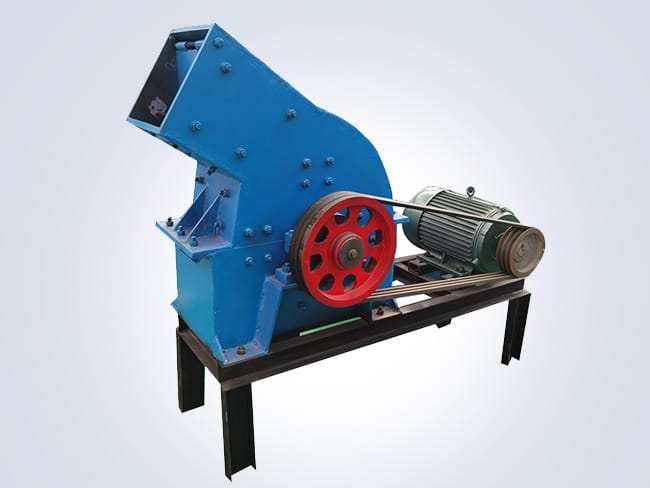
As one of the core equipment in the industrial crushing field. The hammer crusher is widely applied in industries such as mining, building materials, chemicals, and metallurgy, thanks to its high efficiency and flexibility. Its key function is to crush large pieces of material into particles or powders. That meet size requirements through the impact, shearing. And grinding actions of high-speed rotating hammers, thereby providing fundamental conditions for subsequent processing. Hammer Crusher: An Efficient Tool for Material Crushing In mining operations, the hammer crusher can perform primary crushing on hard materials such as limestone, coal gangue, and iron ore. Directly processing raw ore into small and medium-sized lumps suitable for secondary processing, significantly enhancing production efficiency. In the building materials industry, it ensures the uniform crushing of raw materials like cement clinker. And gypsum by controlling the discharge particle size, thereby guaranteeing the quality stability of products such as concrete and cement. Additionally, its compact structure and simple operation make it particularly advantageous in small and medium-sized production lines. It can operate as a standalone unit or be integrated with other equipment to form a multi-stage crushing system, adapting to various scenario requirements. With technological advancements, modern hammer crushers employ […]
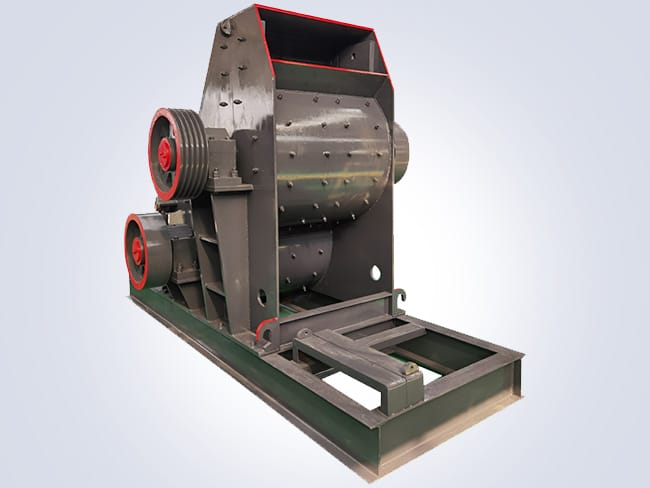
The sand-making machine, also known as the impact sand-making machine, is a core piece of equipment in the fields of artificial sand production and stone shaping. It plays a crucial role in numerous industries such as construction, transportation, and water conservancy. Sand-Making Machine: The “Core Weapon” for Sand and Gravel Production It boasts efficient crushing capabilities. By utilizing a high-speed rotating impeller, it propels materials outward, causing them to collide and rub against the反击板 (Here, “反击板” is a specialized term. If there’s no exact equivalent in English, we can use “反击衬板” which is translated as “impact liner” or simply describe it as “a component for material rebound”; for the sake of this translation, I’ll use “impact plate” for clarity) or other material layers, thereby achieving crushing. This process can transform various types of rocks, ores, and other raw materials into sand and gravel with uniform particle sizes and reasonable gradation. Compared to traditional sand-making equipment, the sand and gravel produced by this machine have more regular particle shapes, mostly cubic, with a low content of flaky and elongated particles, better meeting the stringent quality requirements for sand and gravel in high-standard construction projects. In terms of operation, the sand-making machine […]
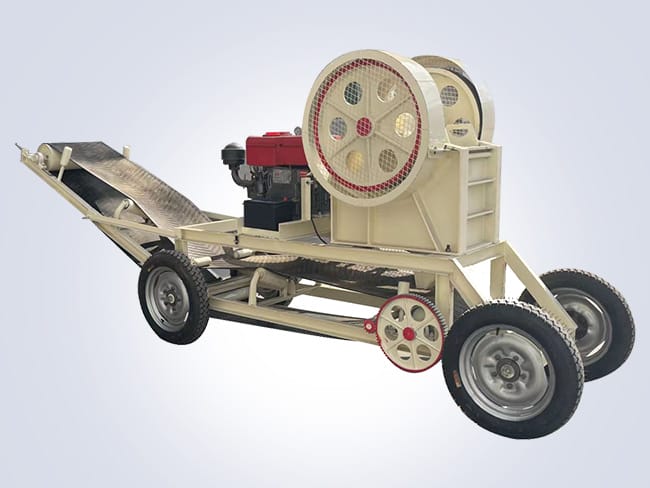
The jaw crusher is a classic piece of equipment in the industrial crushing field, renowned for its simple structure, strong adaptability. And large crushing ratio. It is widely used in industries such as mining, building materials. and chemicals for the coarse or medium crushing of various rocks, ores, and construction waste. Its core principle involves applying squeezing, splitting. And bending forces to the material through the periodic reciprocating motion of the movable jaw plate and the fixed jaw plate, achieving efficient crushing. Jaw Crusher: The “Hardcore Pioneer” in the Mining and Building Materials Fields This equipment is primarily composed of a frame, movable jaw, eccentric shaft, jaw plates, transmission components, and so on. Based on the motion trajectory of the movable jaw, it can be classified into two types: simple swing type and compound swing type. The former is characterized by low speed and large stroke, making it suitable for processing large, hard materials. The latter, on the other hand, excels with high speed and small stroke, offering higher capacity and lower energy consumption. Its advantages lie in its ability to process materials with a compressive strength of up to 320 MPa, accept feed sizes up to 1.5 meters. And […]

Hammer crushers are commonly used medium and fine crushing equipment in fields such as mining, building materials, and chemical engineering. Leveraging their efficiency and flexibility, they have become key equipment in the material crushing process. Their core working principle involves using high-speed rotating hammers to impact, shear, and grind materials. Breaking large raw materials down to the required particle size. They are particularly suitable for processing medium-hardness materials such as limestone, coal gangue, and shale. Hammer Crusher: An Industrial Tool for Efficient Crushing This equipment features a compact structure, primarily composed of a rotor, hammers, lining plates, and a casing. The rotor drives the hammers to rotate at high speeds (with a linear velocity of up to 30-50 m/s). After materials enter the crushing chamber. They are violently struck by the hammers and simultaneously collide with the lining plates and impact plates, achieving multi-stage crushing. Its advantage lies in its ability to shape materials in a single pass, reducing over-crushing while producing uniformly sized and regularly shaped output. Hammer crushers are highly adaptable and can operate independently or be integrated into production lines alongside jaw crushers, cone crushers, and other equipment. By adjusting the gap between the grates, the output […]
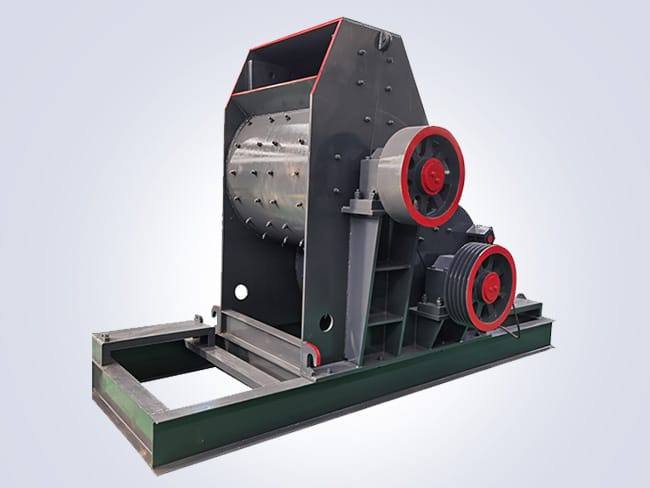
The sand-making machine is the core equipment in artificial sand and gravel production lines. It crushes and shapes stones into sand particles that meet construction standards through mechanical forc. And is widely used in fields such as concrete production, road construction, and railway construction. With the depletion of natural sand resources and the increasing stringency of environmental protection policies, manufactured sand, with its advantages of uniform particle shape and controllable grading, has gradually become the mainstream in the market, driving continuous technological upgrades of sand-making machines. Sand-Making Machine: The Core Equipment for Modern Sand and Gravel Production Modern sand-making machines are mainly classified into three categories: impact type, hammer type, and roller type. Among them, the vertical-shaft impact sand-making machine (such as the VSI sand-making machine) achieves efficient crushing. And shaping integration through its dual modes of “stone-on-stone” and “stone-on-iron.” The finished sand particles have a shape close to that of natural sand, and the powder content is controllable. Some models are also equipped with intelligent control systems that can monitor loads in real time and adjust parameters, balancing output and energy consumption. In terms of technological innovation, sand-making machines are evolving towards larger sizes, energy efficiency, and intelligence. For […]
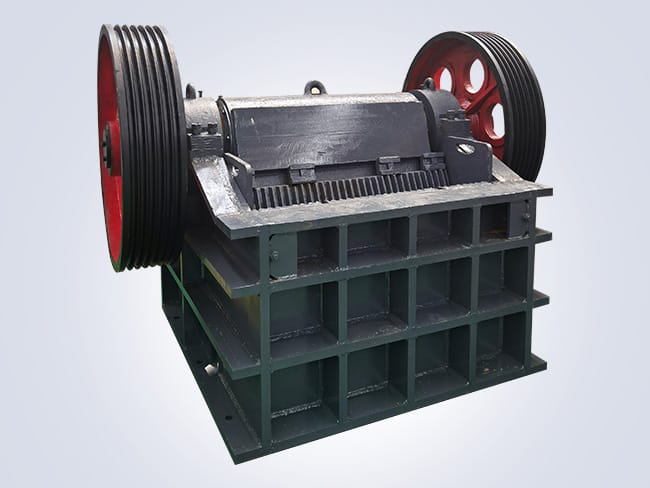
As fundamental equipment in industries such as mining, building materials, and chemicals. The jaw crusher has become the “core weapon” in the coarse crushing stage of materials, thanks to its powerful crushing capacity and stable performance. Its working principle mimics the chewing motion of animals, employing the periodic reciprocating compression between the movable jaw plate and the fixed jaw plate to crush hard materials like granite and limestone into appropriate particle sizes, providing high-quality raw materials for subsequent medium and fine crushing processes. Jaw Crusher: The “Steel Giant Jaw” in the Industrial Crushing Field This equipment features high-manganese steel-cast jaw plates and a heavy-duty eccentric shaft design, enabling it to withstand impact loads of hundreds of tons per hour, with a service life that is over 40% longer than traditional models. Its intelligent hydraulic adjustment system can real-time adjust the size of the discharge opening to ensure uniform particle size of the output materials. Meanwhile, it is equipped with an overload protection device that automatically retreats when encountering uncrushable materials, preventing equipment damage. Under the trend of green manufacturing, the new-type jaw crusher has achieved a 15% reduction in energy consumption by optimizing its power system and transmission structure. Combined […]

The hammer crusher is a commonly used medium and fine crushing equipment in fields such as mining, building materials, and chemical engineering. It is widely applied in various material crushing operations due to its high efficiency and flexibility. Its core structure consists of a rotor, hammers, liners, and a casing. During operation, the high-speed rotating rotor drives the hammers to impact, shear, and grind the materials, achieving rapid crushing. Hammer Crusher: An Industrial Tool for Efficient Crushing This equipment offers significant advantages: it has a large crushing ratio. Capable of reducing large pieces of material to the desired particle size in a single operation. It is highly adaptable, able to handle medium-hardness and brittle materials such as limestone, coal gangue, and shale; its compact structure occupies a small area, facilitating easy installation and maintenance. Additionally, by adjusting the gap between the hammers and liners. The discharge particle size can be precisely controlled to meet different production requirements. With technological advancements, modern hammer crushers continue to be optimized in terms of wear resistance and energy efficiency. For example, the use of high-chromium alloy hammers extends their service life. While the incorporation of hydraulic lid-opening devices simplifies the inspection and maintenance process. […]

As the core equipment for the production of sand and gravel aggregates, sand-making machines play an irreplaceable role in fields such as construction, transportation, and water conservancy. By means of impacting, squeezing, or grinding. they process stones into manufactured sand that meets engineering standards, effectively addressing the issue of the shortage of natural sand resources. Sand-Making Machine: The Core Weapon in Modern Sand and Gravel Production Modern sand-making machine technology is constantly evolving. Mainstream equipment includes impact sand-making machines, hammer sand-making machines, and compound sand-making machines. Among them, the impact sand-making machine (such as the vertical shaft impact crusher) has become the mainstream in the market due to its characteristics of high efficiency, energy conservation, and excellent finished product grain shape. Its working principle involves using a high-speed rotating impeller to hurl stones onto a反击板 (here, “反击板” literally means “counterattack plate”, but in the context of impact crushers. it’s commonly referred to as an “impact plate” or “anvil ring” in English technical literature. For clarity and accuracy, I’ll use “impact plate”) , creating continuous crushing. The particle size is controllable, and the grading is reasonable, meeting the strict requirements for sand used in concrete. The advantages of sand-making machines are […]

As fundamental equipment in industries such as mining, building materials, and chemicals, the jaw crusher has become the “core weapon” in the coarse crushing stage of materials, thanks to its powerful crushing capability and reliable performance. Its working principle simulates the chewing motion of animals. By utilizing a “V”-shaped crushing chamber formed by the movable jaw plate and the fixed jaw plate, it performs periodic compression, splitting, and bending on hard materials such as ores and stones, achieving precise control over particle size reduction from hundreds of millimeters to tens of millimeters. Jaw Crusher: The “Steel Giant Jaw” in the Industrial Crushing Field This equipment boasts three significant advantages: Firstly, its simple yet durable structure, with a robust frame made of cast steel and high-manganese steel linings, can withstand the impact of tens of thousands of tons of materials daily. Secondly, it has a wide range of applications, efficiently handling materials from granite to limestone, and from wet, sticky materials to iron-containing ores. Thirdly, it is easy to maintain. The discharge port size can be quickly adjusted through a hydraulic adjustment device, and the bearing housing features a split design, allowing for the replacement of vulnerable parts in just a […]